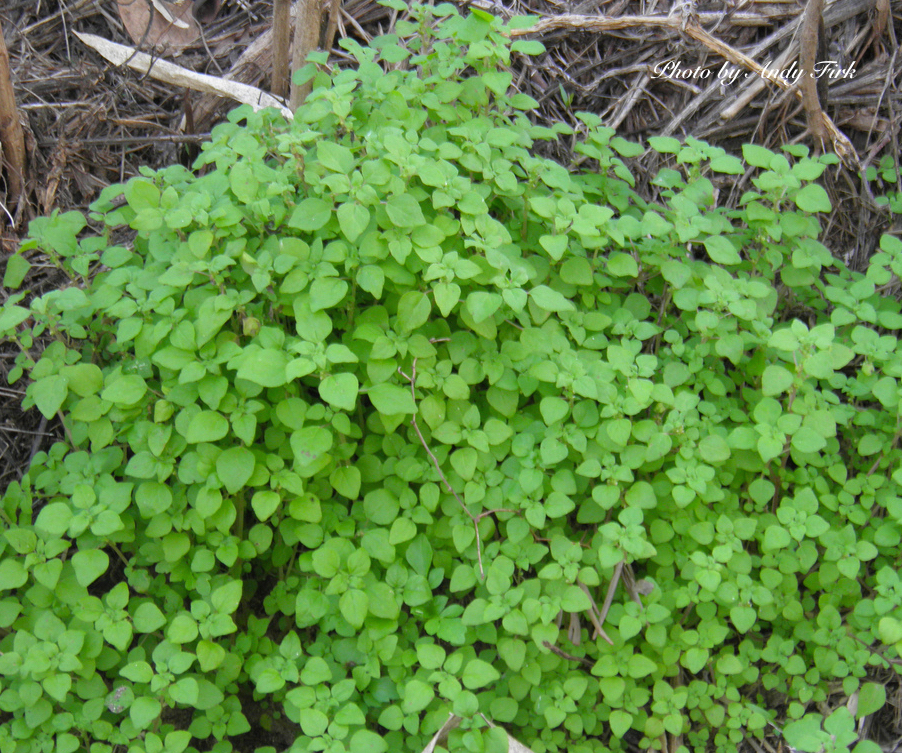
The fresh green of this pellitory was captured by photographer Andy Firk. Visit him on Facebook or at his Bamboo Cove in sunny southwest Florida.
Some plants think it’s Christmas already. Pellitory is a good example. I usually start looking for it around Christmas, perhaps a week earlier. Not only did we see Pellitory during a classes this weekend but there were a few maturing plants. Perhaps it was the cold snap we had nearly two weeks ago, or not.
You can harvest Pellitory for about three months. By mid-March it is looking scraggly. Occasionally in April you can find a few plants in deep shade. But last year I found Pellitory as late as June, and in a fairly sunny location. Three possibilities come to mind. It has a greater season than I have noticed before. The seasonal variation is normal but not that common. Or maybe it’s a local result of some kind of climate change.
Regardless, since Pellitory is up already you might as well read about it here.
Although lichen are usually bitter they are positively viewed here at Eat The Weeds because they are a nearly ubiquitous famine food. lichen also have other applications. One of them, Usnea, has antiseptic qualities. While there are several species of Usnea most herbal writers just refer to it as Usnea. Locally we have another lichen genus that from just a short distance resembles Usnea. It’s called Ramalina. On close examination it is easy to separate the genera. During a class this weekend I saw both growing together on a fence post.
Actually there are several lichen in the photo but the two we are interested in is Ramalina on our left and Usnea on our right. Usnea is round and hairy and has a stretchy white core that you can see if you gently pull a stem. Ramalina is flat and does not have a stretchy white core. But from 20 or so feet away they can easily fool the forager.
While both can be soaked to remove the acid and then eaten we should know how to identify Usnea because of its potential antiseptic use. You can read about Usnea .
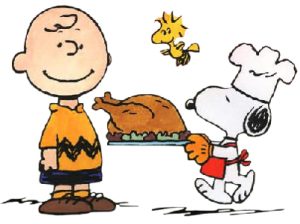 Perhaps the most “American” American holiday is this week, Thanksgiving. It’s a traditional story known by most. English Separatists landed off course — too far north with winter approaching — suffered a lot of disease and death their first year. By the fall of 1621 they were surviving well enough to have a thanks giving feast. The local natives joined in and basis for a holiday was born. That said there are several things questionable about that first Thanksgiving regarding what they ate. The facts are few, the guesses many, and some points are missed completely. I mentioned two of these in a presentation recently before the Mayflower Society’s chapter in Daytona Beach.
Perhaps the most “American” American holiday is this week, Thanksgiving. It’s a traditional story known by most. English Separatists landed off course — too far north with winter approaching — suffered a lot of disease and death their first year. By the fall of 1621 they were surviving well enough to have a thanks giving feast. The local natives joined in and basis for a holiday was born. That said there are several things questionable about that first Thanksgiving regarding what they ate. The facts are few, the guesses many, and some points are missed completely. I mentioned two of these in a presentation recently before the Mayflower Society’s chapter in Daytona Beach.
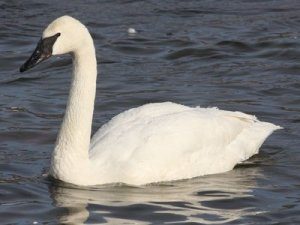 Turkey is referred to by William Bradford, one of the Pilgrims, but back then any large bird was called a turkey. As we know the Pilgrims ate waterfowl and turkey we know at least the turkey was not a goose or a swan which was also common food. They also ate eagles, cranes and two now-extinct birds, Passenger Pigeons and Heath Hens. Incidentally the native turkey is a bright, not too fat of a bird. The fat dumb ones we cook up for thanksgiving were actually bred that way in Europe. We also know when it came to large birds the Pilgrims usually boiled them first then roasted to finish up. Smaller fowl were roasted on a spit.
Turkey is referred to by William Bradford, one of the Pilgrims, but back then any large bird was called a turkey. As we know the Pilgrims ate waterfowl and turkey we know at least the turkey was not a goose or a swan which was also common food. They also ate eagles, cranes and two now-extinct birds, Passenger Pigeons and Heath Hens. Incidentally the native turkey is a bright, not too fat of a bird. The fat dumb ones we cook up for thanksgiving were actually bred that way in Europe. We also know when it came to large birds the Pilgrims usually boiled them first then roasted to finish up. Smaller fowl were roasted on a spit.
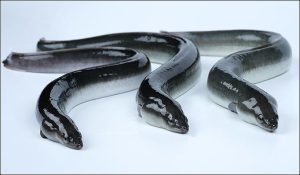 We know they ate venison from five deer provided by the natives, because another Pilgrim, Edward Winslow wrote about it. After that it’s a good guess. The menu could have included eels, herring, seals, lobster, cod, clams and mussels (which is interesting because when I was a kid no one along the coast of Maine that I knew ate mussels. They were considered trash…now they are gourmet.) As for plants, dried corn is presumed to have been at the first Thanksgiving but is not specifically mentioned. I don’t find that surprising. New England natives were not known as agrarian cultures, or not as much as other groups. I suppose it becomes a question of definition as to how many crops does a group has to raise to be an agrarian culture. You don’t see that term often until you move south and west to the Ozarks. The further south you go the more food natives raised. In Florida the tribes were raising large amounts of food. In New England the corn was flint corn also called Turkey Wheat. It was hard and served as porridge or later in the century as “samp” which is corn mixed with milk.
We know they ate venison from five deer provided by the natives, because another Pilgrim, Edward Winslow wrote about it. After that it’s a good guess. The menu could have included eels, herring, seals, lobster, cod, clams and mussels (which is interesting because when I was a kid no one along the coast of Maine that I knew ate mussels. They were considered trash…now they are gourmet.) As for plants, dried corn is presumed to have been at the first Thanksgiving but is not specifically mentioned. I don’t find that surprising. New England natives were not known as agrarian cultures, or not as much as other groups. I suppose it becomes a question of definition as to how many crops does a group has to raise to be an agrarian culture. You don’t see that term often until you move south and west to the Ozarks. The further south you go the more food natives raised. In Florida the tribes were raising large amounts of food. In New England the corn was flint corn also called Turkey Wheat. It was hard and served as porridge or later in the century as “samp” which is corn mixed with milk.
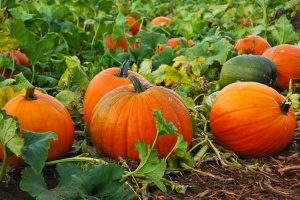 But I think the historical food writers do us a disservice: They limit other possible Thanksgiving plants to cultivated species. Usually mentioned in passing are peas, carrots and turnips. Those probably came with the Pilgrims who did not collectively had a strong history of cultivating plants. We know the natives planted besides corn beans and a variety of squashes. Indeed, if it were not for the pumpkin perhaps the Pilgrim colony would not have been successful. It got them through that first hard winter. They did not make pie out of it — that came perhaps half a century later or more — but rather roasted or fried it. Generally this is where the Pilgrim food story stops except to say the traditional “fixings” grew and changed over the next nearly 400 years.
But I think the historical food writers do us a disservice: They limit other possible Thanksgiving plants to cultivated species. Usually mentioned in passing are peas, carrots and turnips. Those probably came with the Pilgrims who did not collectively had a strong history of cultivating plants. We know the natives planted besides corn beans and a variety of squashes. Indeed, if it were not for the pumpkin perhaps the Pilgrim colony would not have been successful. It got them through that first hard winter. They did not make pie out of it — that came perhaps half a century later or more — but rather roasted or fried it. Generally this is where the Pilgrim food story stops except to say the traditional “fixings” grew and changed over the next nearly 400 years.
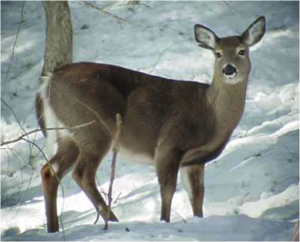 When I went to speak before the Mayflower Society they asked me which lunch I wanted from a choice of three or four. I picked the prime rib as I don’t have it too often. And when people ask me what about the presentation I say I had a good time and had prime rib. I don’t say I had a good time and ate a limp salad with a forgettable dressing with decaffeinated coffee. I mention the highlight, and so I think did Winslow when he mentioned what they ate at that thanks giving. He mentioned what was special, venison, just as I mentioned the prime rib rather than the indistinct bread.
When I went to speak before the Mayflower Society they asked me which lunch I wanted from a choice of three or four. I picked the prime rib as I don’t have it too often. And when people ask me what about the presentation I say I had a good time and had prime rib. I don’t say I had a good time and ate a limp salad with a forgettable dressing with decaffeinated coffee. I mention the highlight, and so I think did Winslow when he mentioned what they ate at that thanks giving. He mentioned what was special, venison, just as I mentioned the prime rib rather than the indistinct bread.
Also missing from the professional speculation, as to what they ate that first Thanksgiving, are prime foraged foods. Or perhaps they weren’t mentioned by the Pilgrims themselves because the food was common if not boring. What native, uncultivated plants might we have expected them to eat in 1621 in coastal North America? Many.
 I would expect chestnuts to have been a common food. It was the dominate species in the eastern forest comprising of some 25% of all trees. And there were hickories and beechnuts as well. There’s never a mention of Ground Nuts (Apios americana) high in protein, very common, easy to locate. These never make the what-could-they-have eaten list nor does wild onions/garlic, Jerusalem Artichokes, and a wide variety of members of the Brassica or wild mustard family. Cranberries make the list, perhaps because eating cranberry sauce is traditional now, but it wasn’t back then. Sugar for sweetener was decades away. Other berries go unmentioned: Blueberries, strawberries, blackberries, gooseberries, elderberries, currants, persimmons (and the wild plum which is not a berry.) Beverages were also left off the reported menu but perhaps for the same reason I don’t mention the decaffeinated coffee I had at the luncheon. They had many things to make drink out of include various mints, goldenrod, and Birch trees. If they had served a good Malbec I’m sure we would have heard of it.
I would expect chestnuts to have been a common food. It was the dominate species in the eastern forest comprising of some 25% of all trees. And there were hickories and beechnuts as well. There’s never a mention of Ground Nuts (Apios americana) high in protein, very common, easy to locate. These never make the what-could-they-have eaten list nor does wild onions/garlic, Jerusalem Artichokes, and a wide variety of members of the Brassica or wild mustard family. Cranberries make the list, perhaps because eating cranberry sauce is traditional now, but it wasn’t back then. Sugar for sweetener was decades away. Other berries go unmentioned: Blueberries, strawberries, blackberries, gooseberries, elderberries, currants, persimmons (and the wild plum which is not a berry.) Beverages were also left off the reported menu but perhaps for the same reason I don’t mention the decaffeinated coffee I had at the luncheon. They had many things to make drink out of include various mints, goldenrod, and Birch trees. If they had served a good Malbec I’m sure we would have heard of it.
Upcoming classes: Sunday, November 30th, Bayshore Live Oak Park, 23000 Bayshore Rd., Port Charlotte, FL 33980, 9 a.m. MEET AT THE PARKING LOT AT THE INTERSECTION OF BAYSHORE ROAD AND GANYARD STREET.
Eat The Weeds On DVD. My foraging videos do not include alligators but they do cover dozens of edible plants in North America. The set has nine DVD. Each DVD has 15 videos for 135 in all. Some of these videos are of better quality than my free ones on the Internet. They are the same videos but many people like to have their own copy. I burn and compile the sets myself so if you have any issues I handle it. There are no middle foragers. And I’m working on adding a tenth DVD. To learn more about the DVDs or to order them click here.
On the Green Deane Forum we post messages and pictures about foraging all year-long. There’s also a UFO page, for Unidentified Flowering Objects so plants can be identified. Recent topics include: Paw Paw Seeds, Flint Knapping, Dried Persimmons, Tell You Love Them, Indian Pipes, Amaranth, Mushrooms: Winter Is Here Six Weeks Early, Chicken of the Woods, Coco Plums? Bush has THorns, Acorns All Colors And Sizes, Turn On The Water, Nanoscopy, Puff on This, Lab To Determine Plant Composition, Orange Red Berry, Atlatl, Odd Trees, Grinder for Tough Roots, European Mountain Ash Edible? Curly Dock, Goldenrod of Some Sort, and American Beautyberry. The link to join is on the right hand side of this page.
Now is the time too to think about going to the Florida Herbal Conference in late February, organized by Emily Ruff. I’ve taught edible plants there for the last three years and will be there again this year. In fact I plan to spend a lot of time there. It’s a must for all southern herbalists and well as those northern ones who want to escape the cold and study their craft in the dead of winter. It always has interesting speakers and great classes. For more information and to register go here.
If you would like to donate to Eat The Weeds please click here

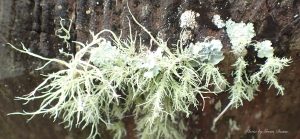
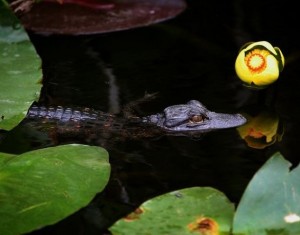



Is your upcoming class Saturday the 29th or Sunday the 30th?
Thanks for catching that. It is Sunday the 30th.
I can personally attest to the affectiveness of Usnea. As I have related in previous blogs, my Seminole Grandmother was a healer who believed and taught us in the use of Usnea; from tea for stomach and digestive problems to poultices for infected wounds and more. Three years ago I broke my left Ulna (upper arm bone) and had to have it surgically repaired with steel pins. I had a subcutaneus cyst under my left shoulder blade from 8 or 9 years of age to 59 when I was hospitilized for arm surgery. Doctors had checked it intermitantly and always told me that it didn’t hurt anything, most people had them at some point in their lives, and unless it got hard or soft or painful not to worry about it. One doctor told me I could have it removed as a cosmetic procedure if its appearance bothered me. While recuperating from surgery I began sleeping on my left shoulder because of bandages, etc.
The cyst began to become soft and mushy and very painful due to irritation of preasure on the area. Doctor said he would take care of it after I healed from surgery. As soon as I was able I went to the woods and gathered Usnea and made a poultice with tea bags and Usnea for several days. The cyst came to a head like a large pimple and when I lanced it about a cup of horrible puss ran out. It continued draining for several days as I continued to apply poultices and eventually dried up and went away. I had had the cyst for 50 years and Usnea healed it naturally. I have used it for wounds from cuts to stepped on nails, and sucked on fresh Usnea for soar throat relief.
Deane – We always enjoy your newsletters, and your site, (though the urge to edit/proof the page is almost unbearable; no insult intended as it is well documented that the brain sees what the writer intended, rather than what is actually written).
Anyway… the swan pictured is a European type. It might take a little more searching, but surely photos of the native trumpeter swan could be found. Now quite rare, as much due to habitat loss, including the poisoning of ‘weeds’ growing in shallow waters that irritated the pleasure boaters whose propellers got fouled, as to the overhunting in the market gunner era… seeing them in flight or at rest on the water is a wonderful experience.
By the way, CANE sugar may have been decades away at the time of the first thanksgiving feast, but the Indians* of the region had maple sugar. Sugar may have been beside the point; some fruits have been traditionally used in various cuisines around the globe for savory or at least not especially sweet sauces and stuffings, at least not sweet by contemporary American standards, where nearly all processed foods are sweetened.
Speaking of the American predilection for sweetness, the experience can be relative, as a number of people from other parts of the world have mentioned to me how overly sweet many American foods and drinks are, not only desserts. Conversely, we know quite a few people who enjoy fresh cranberries as they come from the bush, or dired – no sugar added.
For a welcome bit of bright color in the bleak time of year, it seems that with or without maple sugar, the Pilgrims would have enjoyed cranberries.
*Indians were apparently named for Columbus’ observation of the natives he first met as ‘a people “en Dios” ‘, due to their hospitality to the newcomers, their gentle manner with each other, and their harmony with Nature. Would any of us be surprised to learn that that particular group of Indians is long extinct?
Happy Thanksgiving!
Thanks. Done. Didn’t cross my mind… If one goes by cook books of the era pumpkin pie and cranberry sauce are still in the future.
Having been introduced to “ Lichens” for the first time, it is interesting to me to know about their life, occurrence and uses of these wonderful creatures. Specifically the mid oasis of Erkwit which is part of the Red sea coastal plain of Sudan, as reported, is suitable for living of many epiphytic Lichen tax species. Also the wetter and cooler (due to cumulus clouds and down valley winds) western slopes of the Imatong Mountains and other mountains in the south east of this same country have witnessed dense growth of Unsea on trees.
Apart from the medicinal uses, few other important contributions of Lichens include:
Rain run off change as observed in the once loose sand dunes in Sudan by certain Squamulose desert species of Catapyrenium, Heppia, Peitula and Psora and the Crustose Diploschistes which grow appressed to the soil causing a stable surface which results in no rain off.
Some Lichens may be useful as pollution indicators for example for: NO2, SO2, H, N, , Pb and Zn. It is worthwhile to mention the example of monitoring pollution caused by radio nucleides from the famous Chernobyl nuclear reactor.
In California color changes in Leanora Casscadensis are associated with Cu, while Cetraria species is considered in account on discussing the presence of limestone and marble deposits.